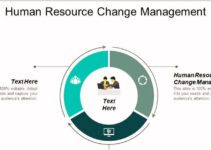Organizational change is highly significant for the growth of businesses and companies. It comprises adopting new technology, building new teams and departments, recruitment, and laying off employees. In order to make organizational change successful, the change leaders should know how to manage the change. The management should its workforce with information about the change and how it would impact them. Today, we’ll discuss the 4 types of organizational change with examples.
There are different change initiative programs, when you know the type of change you would execute in the organization; now is the time to inform them. While implementing the change plan, you should get feedback from your employees, and keep making adjustments to the program based on the feedback. In order to boost their morale, you should facilitate the change program and provide them with support.
4 Types of Organizational Change with Examples
Let’s discuss the 4 types of organizational change with examples; they’re as follows;
Strategic Change
Businesses and organizations launch strategic changes in order to gain a competitive edge, achieve their goals and objectives, take advantage of opportunities, and manage threats. Strategic changes comprise making adjustments and changes in the company’s processes, structures, policies, and procedures. Often, it is the responsibility of CEOs and top management to launch strategic changes.
The strategic change in the organization could be small and minor in the company’s management style or the overall change in the ideology of the company. When the company’s existing strategy is no longer meeting the needs and wishes of its circumstances; the company’s leadership launches strategic changes in order to improve the company’s overall strategy.
Executing a new strategy has a great impact on the overall organization and its performance. It allows them to have a competitive edge in the market.
Example – Toyota
Toyota is the world’s leading automotive brand. The company launched strategy changes in order to gain the advantage of the leaner structure organizations. The executed change program resulted in the form of proactive decision-making, decentralization, and functioning.
Example – Mission Updated
Initially, the focus of the company is on attracting the attention of customers, creating a customer database, and generating leads. Once the organization has developed a strong database of customers and clients, it has changed its focus on selling. As the company is going through the evolution stage, so is his company’s mission statement.
People focused Change
It doesn’t matter what type of changes you are going to launch in the organization, it would impact people and employees. People-focused change strategy comprises either hiring new employees or laying off the old ones. The management and change leadership should keep in mind that the employees would ultimately resist the change while implementing the change program.
Some of the skills you require for implementing the people-focused change program are as follows;
- Empathic approach
- Effective leadership
- Open and honest communication
- Transparency
It comprises analyzing how you are going to resolve problems in the workplace; providing training to employees to upgrade their knowledge and skills. The management should effectively communicate the change program that how it would benefit them and the organization.
Example – Lay Off
If a company is going through the process of recruitment and layoffs at a mass scale, then it brings changes in the internal processes and operations. The management should keep in mind the motivation level of employees and the impact of layoffs on the existing employees. Often, it develops feelings of fear, stress, and anxiety. Therefore, management should be transparent and openly communicate the reason for such radical changes.
Technological Change
Technological change comprises employing tech equipment, tools, and software in the company’s processes and system in order to gain a competitive edge. Businesses and organizations re-engineer their processes and operations in order to increase productivity and achieve higher workflow. However, tech changes comprise employing technology in various processes in order to improve delivery services, product assembling, and other processes.
Innovation and creativity in the digital transformation age are changing the business environment. Companies are finding new ways to improve their processes by employing tech processes and structures.
The focus of employing the latest technology is to make your life simple and easier. But when it comes to implementing the technology, is a very critical process. People would prefer the same old way of doing things, rather than changing them with new ones.
Example – Launching New Technology
If you are planning to switch from obsolete software to the latest software and tool; then you should inform your team members and give the reason why you’re implementing change. You should tell them how the Salesforce software would help you to manage leads and engage with customers. While explaining, don’t forget to share the benefits like detailed analytics, customer relationship, and marketing.
You should launch training and development programs to facilitate and support employees; it increases the probability of accepting technology in the company’s processes.
Unplanned Change
Unplanned change comprises taking necessary actions and steps based on unexpected events. The thing about unplanned changes and results is that you can foretell about them, but you can manage them if you’re aware of the change management concept.
Example – Losing Workforce
If a competitive firm takes away one of your most valuable employees with an attractive salary package that you weren’t expecting, it is a great example of unplanned change. It is the same time when your company is facing the challenge of a higher turnover rate. In such a case, the most effective strategy in such a scenario is succession planning in order to decrease the impact of the change.
Succession planning helps you in the following ways;
- Recognizes the key posts of the company,
- Future roles and responsibilities and individuals that could find those roles,
- Transferring and documenting,
- Needs of the future staff
Conclusion: 4 Types of Organizational Change with Examples
After an in-depth study of the 4 types of organizational change with examples; we have realized that organizational change is important for a company’s growth and productivity. If you are learning about the type of change in organizations, then you should keep in mind the abovementioned types with examples.
Ahsan is an accomplished researcher and has a deep insight in worldly life affairs. He goes Live 3 days a week on various social media platforms. Other than research writing, he’s a very interesting person.


